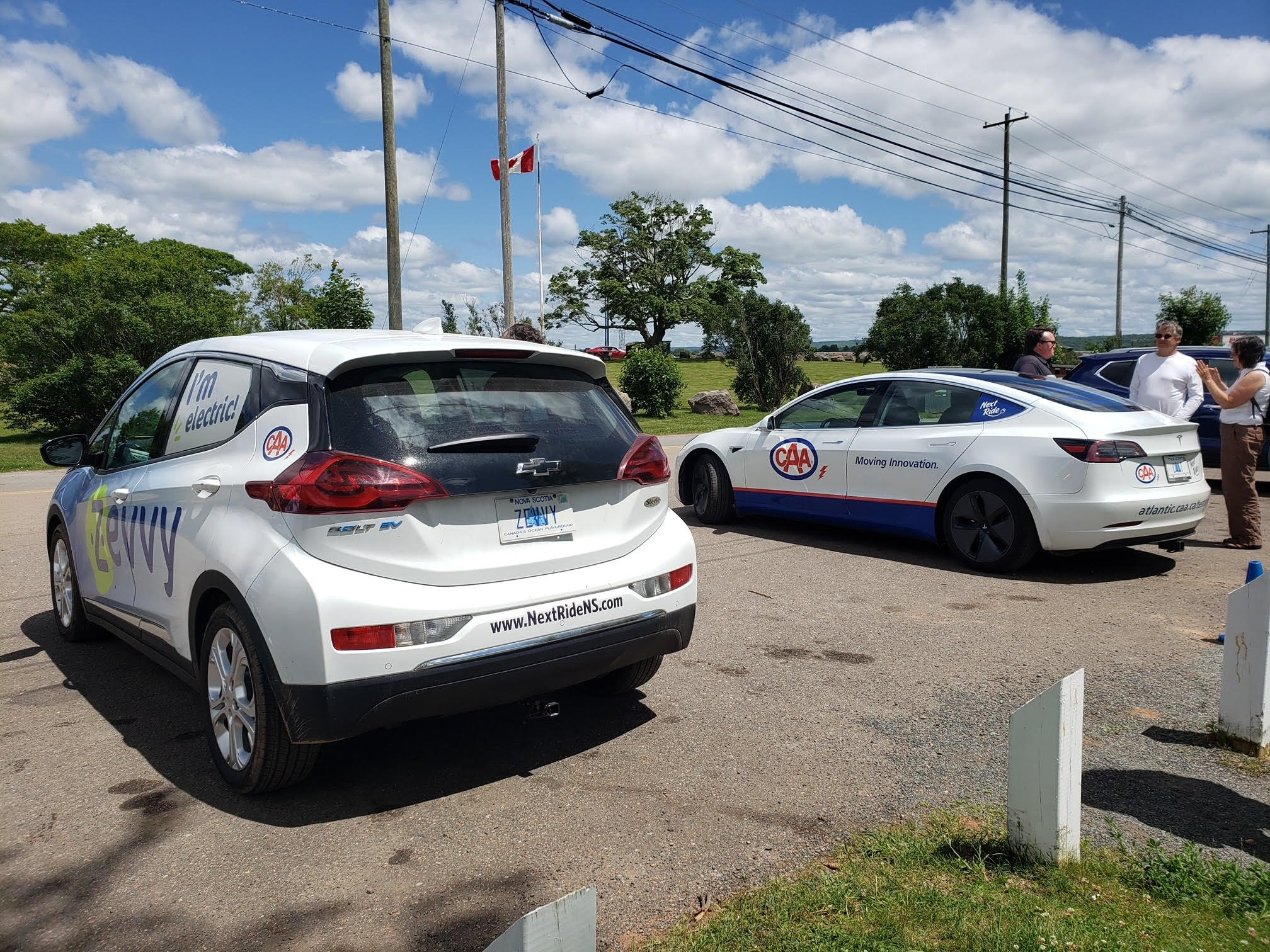By 2030, all 500 or so light-duty vehicles owned and operated by the Halifax Regional Municipality (HRM) — everything from police cruisers to pickup trucks — will be electric. At least, that’s the plan.
“We’ve got six years left,” says Kevin Boutilier, manager of clean energy with HRM. “We’ve also got a lot of momentum, and a lot of support in terms of funding.”
This funding comes from the Climate Action Tax, instituted in the 2022-23 fiscal year and bringing in $18 million annually; roughly $3 million is earmarked for fleet electrification.
Money may not be an obstacle, but the vehicle supply chain, says Boutilier, is another story.
“We’ve found it very difficult to actually source electric vehicles,” he says. “We put tenders out and some come back with nothing.”
EVs, he says, are in such high demand and short supply that many dealerships prefer selling them piecemeal, rather than engaging in an onerous tender process. So, while Boutilier and colleagues are putting a lot of effort into pairing the right EVs with the right municipal departments, they’re also restrained by what’s available. So far, they’ve acquired 30 EVs, with an additional 30 on order, including Ford’s E-Transit Van, Mustang Mach-E and F-150 Lightning, and Hyundai’s electric Kona and Ioniq.
Supply issues aside, Boutilier is still hopeful about meeting targets.
“I’m very optimistic,” he says. “I feel like 2030 is within reach.”
And HRM is not alone in its push towards electrification. The Municipality of the District of Lunenburg (MODL) also aims to electrify its light-duty fleet by 2030 and has already acquired two Volvo XC40s, two Ford F-150 Lightnings and one Ford Mustang Mach-E, most of which are employed in their Building and Fire Inspection Services. Seven additional EVs have been included in their five-year capital investment plan, which should be enough to meet their 2030 target.
“We have to be innovators,” says Kacy DeLong, MODL council member for District 8. “At this stage in the climate crisis, if we’re not part of the solution, we’re not doing our jobs.”
The Municipality of Colchester has committed to an entirely electric light-duty fleet by 2035, a fleet which is, at present, composed exclusively of half-ton and three-quarter-ton trucks — 21 in total. Like their neighbours in HRM, they’ve found the market difficult to navigate. EVs can take months and sometimes years to order in, delays that have proven prohibitive every time a truck needs replacing.

“That’s been a bit of a barrier,” said Joanna Burris, Colchester’s sustainability planner. She hopes to overcome the issue with an EV purchasing policy, empowering the municipality to order replacement EVs far in advance of an expected replacement. That way the new EV will be present and accounted for when an existing Dodge Ram 1500 or Chevy Silverado 2500 is at the end of its lifespan.
“It hasn’t worked to buy them casually,” says Burris. “We really need a policy.”
Kings County is approaching their transition more flexibly. Instead of establishing deadlines, they’ve simply committed to buying the “greenest” option available when sourcing new vehicles. In the absence of sufficient charging infrastructure across the county, that’s meant hybrids, such as the Honda CR-V, Mazda CX-90, and Ford F-150. Five such hybrids have already entered the fleet, and unlike EV equivalents, were relatively easy to source.
“Once we have the charging infrastructure, we’re going to be shifting from hybrids to EVs,” says Zobia Jawed, director of environmental services and climate resilience. A shift she expects to happen in 2025.
Cape Breton Regional Municipality (CBRM), unlike the rest of Nova Scotia, is starting with its largest vehicles and working its way down. An influx of international students to Cape Breton University (CBU), in Sydney, has increased demand for public transit, and the municipality figured if it was buying new buses, they might as well be electric.
“We see battery-electric buses as the best way to meet the current and future demand for transit in our area, while at the same time reducing our greenhouse gas emissions,” says Raymond Boudreau, senior manager of public works with the municipality.
By 2040, and with a blend of federal, provincial, and municipal dollars, they plan to have electrified their entire fleet of 23 buses, with an initial purchase of six buses planned for 2027. They haven’t yet settled on a make and model, but the estimated cost will be $800,000 to $1.1 million per bus, depending on range.
Electrification is sweeping Nova Scotia, but Halifax remains the largest player in both budget and ambition. On the same deadline as its light-duty fleet, HRM has committed to electrifying heavy-duty equipment like snowplows, and in this pursuit, Kevin Boutilier is less optimistic. To his knowledge, he says, no one’s manufacturing electric snowplows, but says he’s “keeping his eyes on the market.”
Public transit is a different story. HRM has 60 electric buses on order from the Quebec company Nova Bus, with delivery expected this fall. But on March 4, they announced a bigger project still — the construction of a new high-speed ferry terminal adjacent to the chronically congested Bedford Highway (to be located at Mill Cove), which will connect Bedford to downtown Halifax via five electric ferries. It’s an initiative to cut carbon and traffic in a single stroke and is expected to come online in the 2027-28 fiscal year.
“We might be a speck on the map,” says Boutilier, “but we have a responsibility to do everything in our power and fiscal resources to decarbonize while making our city more resilient in the process.”
The Climate Story Network is an initiative of Climate Focus, a non-profit organization dedicated to covering stories about community-driven climate solutions.
Hoorah for NS
Hoorah for NS
A province still burning coal but with a real plan to move forward.
Thank goodness not in cahoots with SK and AB whose leadership frankly is out of touch and out to lunch
If Nova Scotia is serious
If Nova Scotia is serious about electrification, they'll need to improve their public charging infrastructure drastically. I drove my EV from BC to Newfoundland in the summer of 2023, and I thought Nova Scotia had the worst charging infrastructure of any province, even worse than Saskatchewan.
It's nice to see the
It's nice to see the motivation on the consumer side in NS. There is also much interest on the production end, especially with offshore wind.
I believe that potential is enormous, enough to establish a significant clean power export industry. And manufacturing based on renewable electricity.
A quick peak at the huge progress in offshore wind in the UK illustrates this posdibility.




Comments